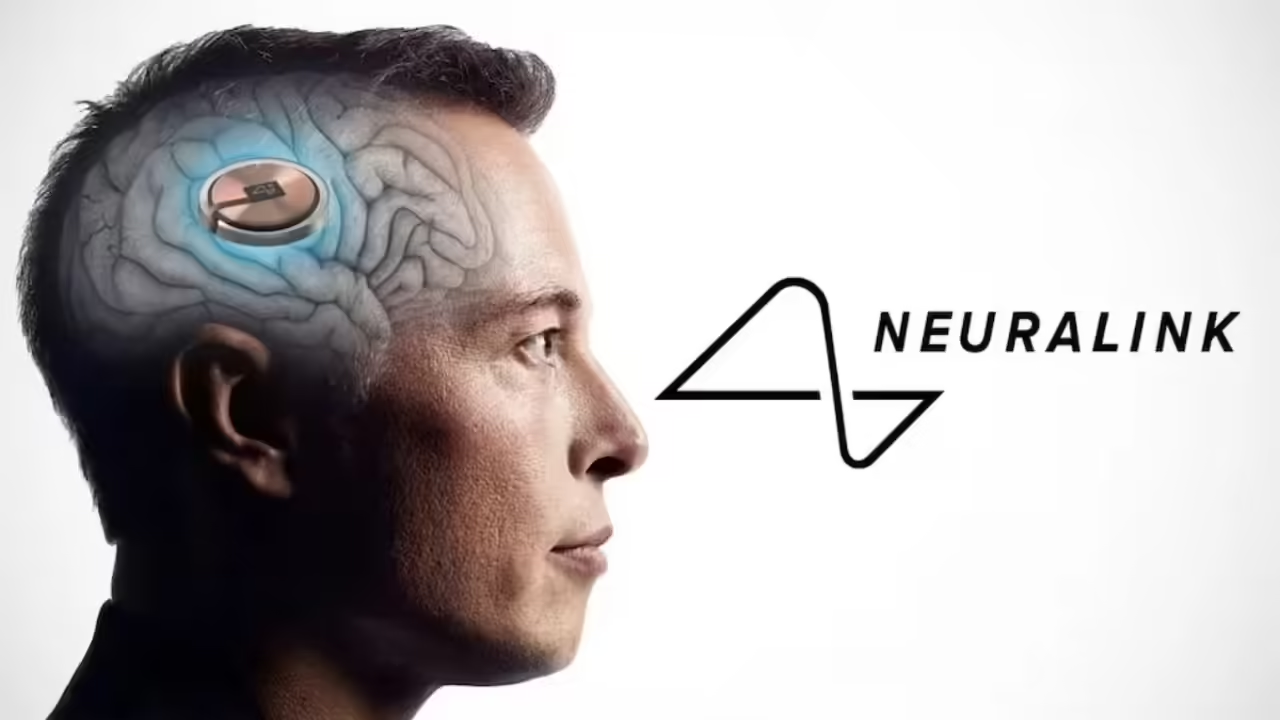
Neuralink Drives Future Neurotechnology!
On January 30, 2024, Neuralink, a company founded by Elon Musk, announced with great anticipation the successful implantation of the first brain chip in a human being. This event marks an unprecedented milestone in the history of neurotechnology and opens the doors to a future where interaction between the brain and machines could revolutionize various aspects of our lives.
The patient, a 64-year-old man with paralysis, has experienced promising initial results. The chip, called “Telepathy,” has successfully detected neuronal activity, opening the possibility of restoring lost motor functions and improving communication in people with neurological disabilities.
Musk, ever the visionary, has described this breakthrough as “an important step towards the future of brain-computer interface.” With this milestone, Neuralink positions itself at the forefront of research in this field, aiming to develop technologies that can improve health, quality of life, and human capabilities.
However, this advancement is not without controversy. Some experts have expressed concerns about the ethical and social implications of this type of technology, especially regarding privacy, security, and potential inequality in access.
Despite these concerns, Neuralink’s brain implant represents a giant leap in neuroscience and technology. It serves as a reminder of the rapid pace of innovation in this field and opens up a world of possibilities for the future of humanity.
The recent announcement by Neuralink about the successful implantation of a brain chip in a human marks an unprecedented milestone in the field of neurotechnology. This advancement opens up endless possibilities for the future, where brain-machine interaction could transform how we live, work, and communicate.
The implant, called “Telepathy,” has been tested on a 64-year-old man with paralysis. The initial results are promising, as the chip has successfully detected the patient’s neuronal activity. This paves the way for restoring lost motor functions, improving communication in people with neurological disabilities, and developing new brain-computer interfaces.
Elon Musk, founder of Neuralink, has described this achievement as “an important step towards the future of brain-computer interface.” The company has positioned itself at the forefront of research in this field, aiming to improve health, quality of life, and human capabilities through technology.
However, this advancement is not without controversy. Some experts have expressed concerns about the ethical and social implications of this type of technology, particularly regarding privacy, security, and potential inequality in access.
Despite these concerns, Neuralink’s brain implant is a historic milestone that brings us closer to a future where neurotechnology could play a fundamental role in our lives.
Does a New Era in Medicine and Technology Begin?
It is possible that Neuralink’s brain implant marks the beginning of a new era in medicine and technology, but it is still too early to say for sure.
Undoubtedly, this advancement represents an important milestone in the field of neurotechnology. The potential applications of this technology are incredibly broad and could revolutionize the way we treat neurological diseases, restore lost functions, and even enhance human cognitive abilities.
However, it is also essential to consider the ethical and social challenges this technology presents. Strong ethical safeguards must be established to ensure that the technology is used responsibly and not abused. We must also consider the social implications of this technology, such as the potential to increase inequality and loss of privacy.
It is important to have an open and honest dialogue about the potential risks and benefits of neurotechnology before it is widely integrated into society. We must ensure that this technology is developed and used in a way that benefits all of humanity.
How Does Neuralink’s Brain Chip Work?
Neuralink’s brain chip, also known as “Telepathy,” is a small, lightweight implantable device inserted into the brain through a minimally invasive procedure. The chip consists of a series of tiny electrodes that connect to the brain’s neurons and can record their electrical activity.
How Does the Chip Work?
- Data Collection: The electrodes detect the electrical impulses generated when neurons communicate with each other. This data is wirelessly sent to an external device, such as a computer or smartphone.
- Data Processing: An artificial intelligence algorithm analyzes the neural data to understand the user’s intention. The algorithm learns to associate specific patterns of neural activity with desired actions or commands.
- Output: The external device can interpret the information received from the chip and perform the desired action, such as moving a cursor on a screen, controlling a prosthetic device, or even generating text.
What Are the Applications?
Neuralink’s brain chip has the potential to revolutionize how we interact with technology and the world around us. Some possible applications include:
- Restoring Lost Functions: The chip could be used to help people with paralysis regain control of their limbs or improve communication in people with speech disorders.
- Controlling External Devices: The chip could be used to control computers, smartphones, prosthetics, and other devices with the mind.
- Enhancing Cognition: The chip could be used to improve memory, concentration, and other cognitive functions.
- Augmented Reality and Virtual Reality: The chip could be used to create more immersive and realistic AR and VR experiences.
What Are the Challenges?
Despite the technology’s potential, there are some significant challenges that must be addressed before Neuralink’s brain chip can be widely used:
- Safety and Privacy: It is crucial to ensure that users’ neural data is protected from unauthorized access and that their privacy is not compromised.
- Ethical Implications: A clear ethical framework needs to be established for the development and use of this technology, considering issues like consent, autonomy, and potential discrimination.
- Technical Challenges: Technical challenges such as improving the chip’s battery life, miniaturizing components, and enhancing neural detection accuracy need to be overcome.
What New Possibilities Does This Technology Open?
Neuralink’s brain implant opens up a range of new possibilities that could revolutionize various aspects of our lives. Below are some of the most impactful areas:
- Health and Well-being:
- Restoring Functions: The implant could help people with paralysis, epilepsy, neurodegenerative diseases, and other conditions regain lost functions, such as mobility, communication, or vision.
- Improving Mental Health: The chip could be used to treat disorders such as depression, anxiety, and PTSD by monitoring brain activity and providing personalized stimulation.
- Enhancing Cognitive Abilities: The implant could improve memory, attention, learning capacity, and other cognitive functions, boosting academic and professional performance.
- Interaction with Technology:
- Intuitive Device Control: The chip could allow us to control computers, smartphones, prosthetics, and other devices with our minds, simply by imagining or thinking about the desired action.
- Augmented and Virtual Reality: The technology could create more immersive and realistic AR and VR experiences, overlaying digital information onto the real world or creating fully simulated virtual environments.
- Brain-Computer Interfaces for Entertainment: The implant could be used for gaming, music control, or even creating art with the mind, opening new forms of entertainment and creative expression.
- Communication and Social Relationships:
- Telepathic Communication: The chip could enable us to communicate with others directly through our thoughts, without the need to speak or write.
- Enhanced Empathy and Understanding: Access to others’ brain activity could help us better understand their emotions, thoughts, and intentions, fostering deeper and more meaningful relationships.
- New Forms of Collaboration and Teamwork: Telepathic communication and direct information transfer between brains could revolutionize teamwork, increasing efficiency and productivity.
- Human Enhancement and Future Exploration:
- Enhancing Physical and Mental Performance: The implant could optimize our physical performance, increasing strength, endurance, and coordination, or even improve our cognitive and learning abilities.
- Exploring New Frontiers: The technology could open the door to new ways of perceiving the world, interacting with reality, and exploring our own consciousness, leading to advances in fields such as neuroscience, philosophy, and spirituality.
- Transhumanism and Human Evolution: The brain implant could represent an important step towards transhumanism, merging technology with human biology to enhance our capabilities and redefine our relationship with technology.
It is important to remember that these are just some of the possibilities opened up by Neuralink’s brain implant. As the technology develops, new applications and uses will likely emerge that we cannot yet imagine. However, it is also crucial to address the ethical, social, and technical challenges this technology presents before it is widely integrated into society.
Certainly, Neuralink’s brain implant and neurotechnology in general open up a world of exciting possibilities for the future, but they also generate concerns and warnings from some experts. It is crucial to consider these aspects seriously and establish an ethical and responsible framework for the development and use of this technology.
Below are some of the main concerns:
- Privacy and Security of Neural Data:The collection and analysis of extremely sensitive neural data pose serious risks to users’ privacy. Who will have access to this data? How will it be stored and protected? What measures will be taken to prevent misuse or hacking?
- Ethical Implications and Mind Control:The ability to influence or control brain activity through neurotechnology raises ethical questions about individuals’ autonomy and free will. Could this technology be used to manipulate or control people’s behavior? Who would have the power to do so? How would responsible and ethical use of this technology be ensured?
- Inequality and Discrimination:Access to and use of neurotechnology could exacerbate existing inequalities in society. Who will have access to this technology? Could it be used to widen socioeconomic gaps or create new forms of discrimination?
- Social and Psychological Impacts:Neurotechnology could have unintended impacts on how we relate to ourselves and others. How will this technology affect our perception of reality and our identity? Could it lead to social alienation or excessive dependence on technology?
- Technical Challenges and Health Risks:The development of neurotechnology is still in its early stages, and there are technical risks associated with brain implants, such as device failures, infections, or neurological damage. It is crucial to ensure the long-term safety and efficacy of this technology.







